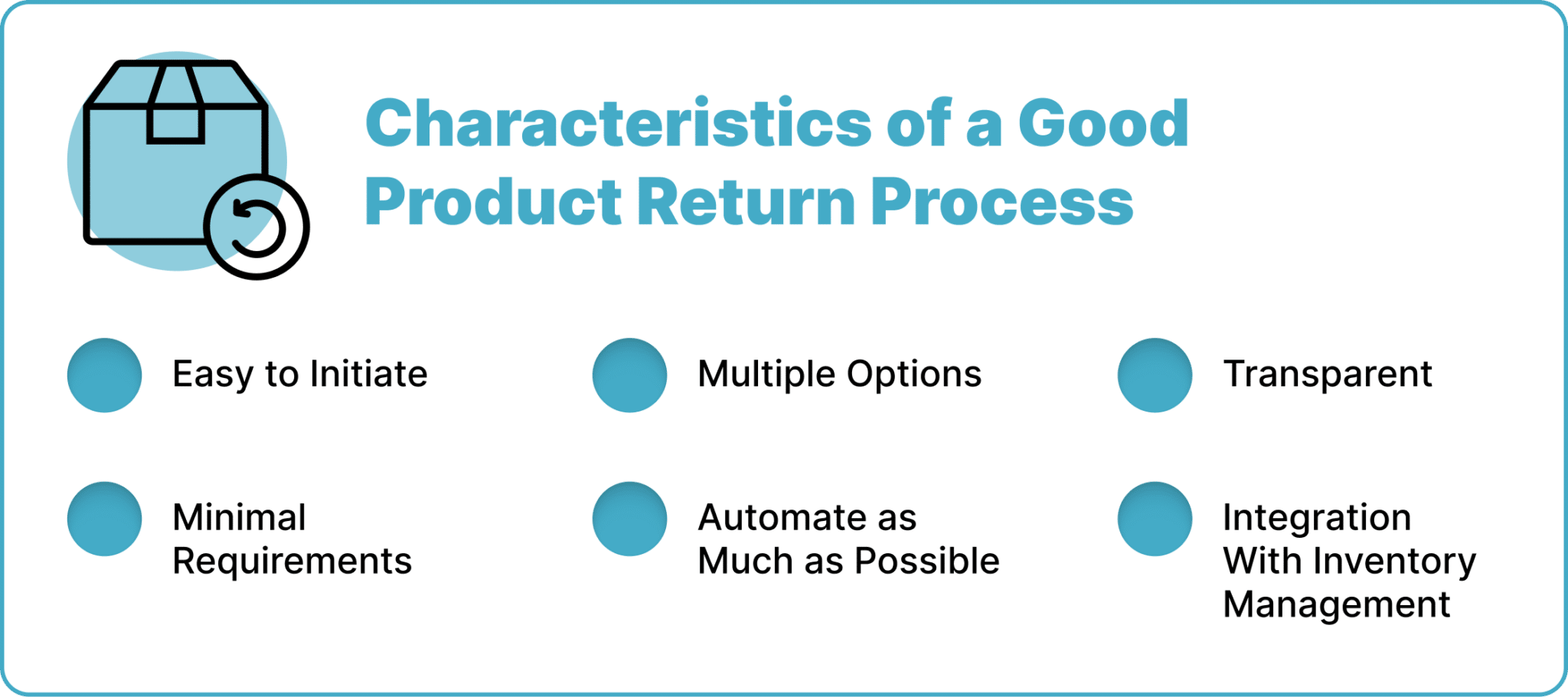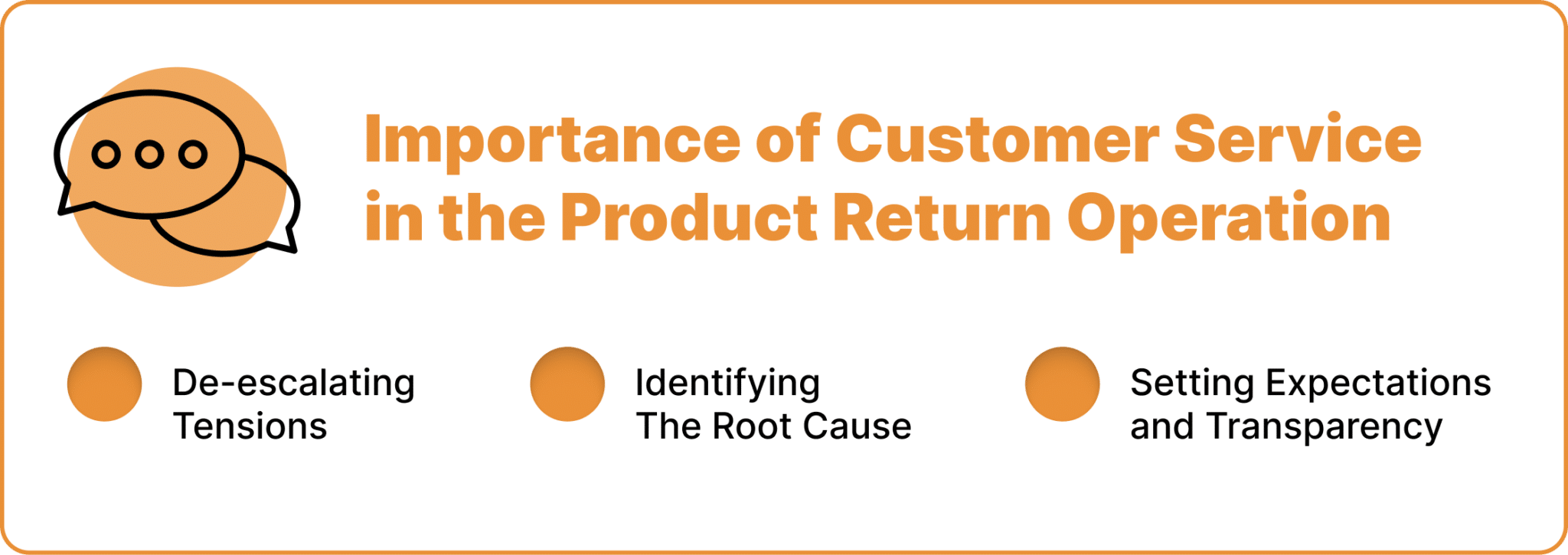Correlation Between Customer Satisfaction and Return Rates

Product returns can be fraught with many questions, chief of which relate to the customers. Does it impact their satisfaction? Does it change anything? And what is the impact of a good product return process? These are valid questions, especially for a company trying to give its customers the best experience possible. So, what is the correlation between customer satisfaction and return rates?
Typically, when retailers see a high product return rate, they automatically assume that the customer is dissatisfied because of their poor service, but many factors lead to a product return.
Tip: Many times, it is not the retailer’s fault. In such a case, do you think the customer is still dissatisfied? Either way, the answer to customer satisfaction lies in optimizing the product return process.
Does Product Return Satisfy Customers?
There are nuances to product returns. Different industries have different rates of return. For instance, the food industry does not have nearly as many customer returns as the fashion industry. Sometimes, retail supply chain management is to blame for customer returns. Other times, it might be the consumer. Whatever the case, the customer is the main focus of the business and supply chain operation. How product returns impact these customers is the most relevant question here.
The answer to the question depends on the situation and the customer. A customer who has made a mistake will be more grateful for the product return. However, a customer who did not make a mistake but received the wrong product will be annoyed, especially when the product return process is poorly designed.
Characteristics of a Good Product Return Process
Customers don’t like getting the wrong products, whether it is their fault or the business. A good product return experience can help mitigate some of that dissatisfaction. Here are some characteristics of a good product return process:

Easy to Initiate
The product return process must be easy enough for the customer to initiate. This way, the customer can complete it in as few steps as possible without feeling stressed or needing to call customer service.
Multiple Options
The customer should have multiple return options, including a drop-off or a pickup. However, it is essential to highlight the benefits to the consumer. This could help the customer feel more in control of the entire supply chain process.
Transparent
With technology, this is much easier. Transparency allows retail supply chains to communicate every step of the process to the consumer, fostering communication and enhancing the self-service option for the consumer.
Minimal Requirements
The product return process should have as few requirements as possible. The customer shouldn’t be stressed or jump through hoops when returning an unwanted item.
Automate as Much as Possible
The product return process should be automated to improve efficiency and eliminate errors. It will also create a resilient supply chain and speed up the entire process.
Integration With Inventory Management
Ensure the return process seamlessly integrates with your inventory management system to reflect the status of each item. This could also help with updating stock levels.
Impact of Product Returns on the Consumer
The impact of the product return process depends on its efficiency. If the product return process is seamless and optimized, it will be more suited to meet customer demand. The reverse will naturally lead to dissatisfaction. Here, we look at the impact of a poorly done and efficient product return process on the consumer.
Impact of Poor Product Return on the Consumer
When done poorly, the product return process can feel like a burden for the customer. Couple that with a situation where the retailer is at fault, and you have a real problem. Here are some of the impact on the customer.
1. Time and Effort
When the product return process is messy, many customers perceive it as time-consuming, which impacts their satisfaction with it. A poor and messy product return process doesn’t encourage higher customer retention rate.
2. Potential Delays
Imagine a customer ordering a product and wanting to use it immediately, only to find out the wrong product was delivered. If the product return process is not seamless, the delay could be frustrating, leading to dissatisfaction. Ensuring the product return process is as seamless and efficient as possible is important to curb this.
3. Environmental Impact
In a world where 78% of consumers feel that sustainability is important, your logistics operation cannot be messy. Stressful or messy product returns may harm a customer, especially when mistakes persist.
Impact of Efficient Product Return Process
When done properly, customers are more open to the product return process. This means that they are more likely to engage with it and more likely to be satisfied with the entire operation. Here are some of the impacts of a well-thought-out product return process.
1. Peace of Mind
Having peace of mind means trusting the product return operation. This is usually a result of its ease of use and transparency.
2. Increased Trust and Brand Loyalty
A seamless product return operation invites customers to continue using it. This also enhances their trust in your business because it means that when they make a mistake, they can easily correct it without having to jump through hoops.
3. Improved Product Quality
When the product return process is seamless, you can pick up and analyze returns data on how customers interact with the entire operation. You can gather better information that will enable you to improve product quality, have a better demand forecasting system in place, and potentially reduce inventory costs.
Importance of Customer Service in the Product Return Operation
Although you can do a lot to simplify the product return process on your platform, implementing a robust and responsible customer service program can take the effectiveness of the product return process up a notch. Here are some of the reasons you must do this:

De-escalating Tensions
Customers may have anxieties, especially when they panic about spending money and getting the wrong product. This is understandable, and with a customer service program, you can help the customer de-escalate all that tension. It will also help the customers go through the product return process.
Identifying The Root Cause
Customer service personnel can help the customer find the root cause of the problem. It could be a customer mistake or an error on the part of the retail business. Whatever the case, helping the customer find the root cause will be helpful.
Setting Expectations and Transparency
With an effective customer service program, you can manage customer expectations and ensure they have the right mindset concerning the return process. It also helps promote transparency and communicate timelines.
How ReverseLogix Can Help Improve Customer Experience In Product Returns
The key is for us to help you build a product return experience that keeps your customers returning. One of the primary factors influencing how or whether your customers will purchase from you again is your product return experience. With Reverselogix, you can provide a world-class returns experience that entails a branded, quick, and easy process. This will drive customer loyalty and repurchase rates from your online store.
The ReverseLogix online return process features customer-centric features. These allow you to enhance customer satisfaction and gain real-time insights from each return. Now, you can also save time and money with automation. This helps amplify customer feedback, self-service returns, process easy exchanges, and instant crediting. We empower you to create a hassle-free experience that guarantees satisfied customers to your retail store or business.
View our pricing plans or schedule a demo walkthrough with our team to learn more about ReverseLogix’s returns management capabilities.
Frequently Asked Questions
1. Do high return rates always mean unhappy customers?
High return rates can be due to customer dissatisfaction with product quality, misleading descriptions, or poor customer service. However, other reasons could impact returns, such as an error on the customer’s part. A lot of it depends on the situation.
2. How can return rates actually benefit customer satisfaction?
A customer-friendly return policy with a smooth return process demonstrates that the company cares about customer experience and is willing to stand behind its products. This can actually improve customer satisfaction.
3. How can businesses leverage customer feedback from returns to improve products and services?
Retail businesses can leverage customer feedback from returns to identify product issues, gather insights into preferences, prioritize development initiatives, and enhance user experience. Ultimately, it will help improve products and services to meet customer needs effectively.
